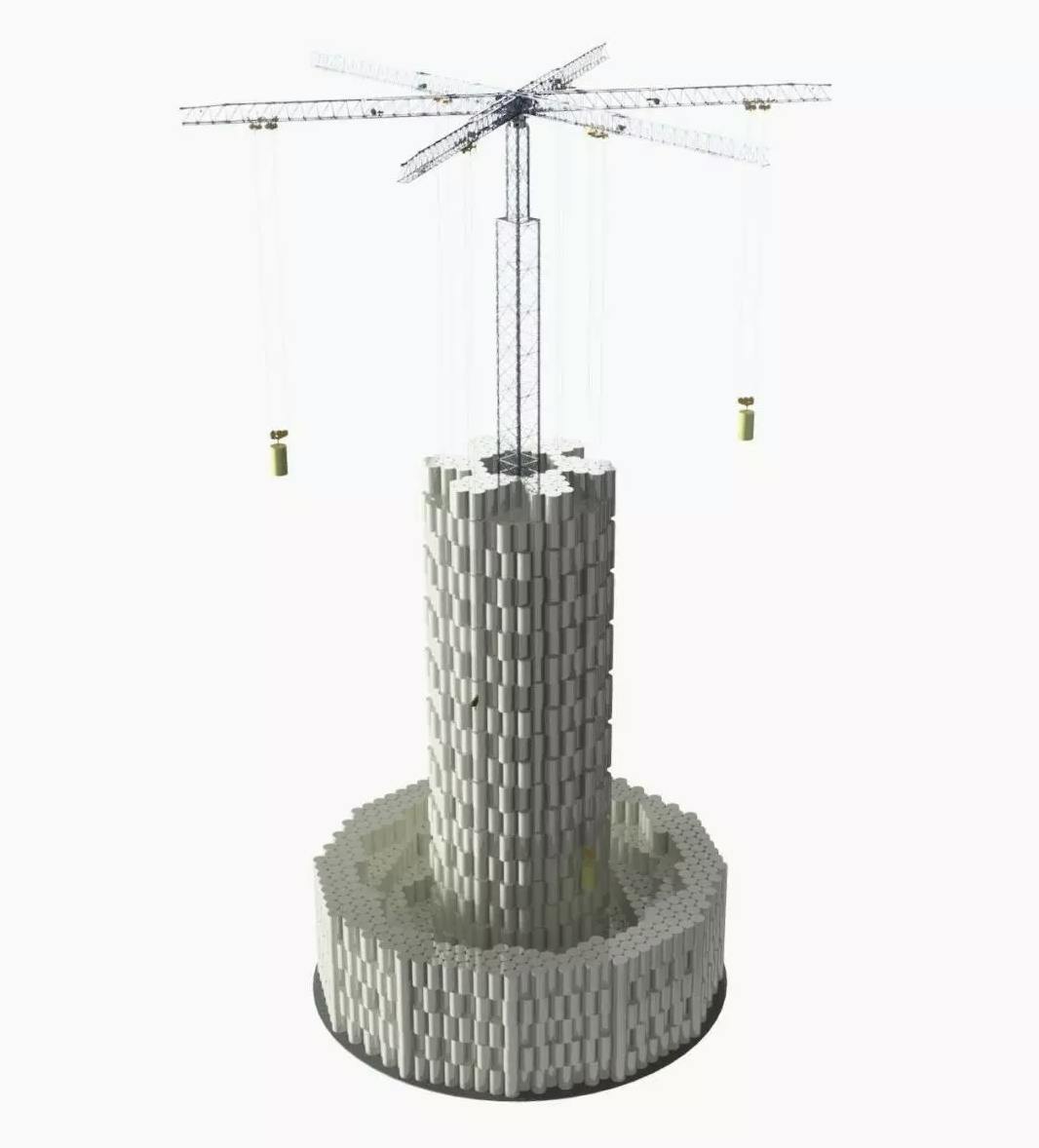Yet there
remains one niggling problem - intermittent power production. Gas, coal and nuclear proponents like to
snicker and jeer, calling solar and wind by the energy industry pejorative,
“non-dispatchable.” Nighttime rolls
around and winds die down, solar and wind power generation come to a halt. These sources cannot be counted on to supply
the consistent power supply required to keep the electric grid working properly.
To solve this
problem, wind and solar power developers have leveraged battery technology and
various smart grid solutions that smooth the flow of electricity into the
grid. Unfortunately, grid-scale
batteries are expensive and the more affordable pumped hydroelectric storage is
not available in many regions.

Engineers at Energy Vault,
SA, a privately held developer in Switzerland, think the
solution is to be found in low-tech blocks.
The company has configured a set of blocks about the size of an oil
barrel that can be elevated with a crane and pulley system into a tall column
when power is generated. From its lofty
perch each barrel represents stored energy.
When needed the barrel can be returned to the base, driving energy into
the grid with its move back down. The
physics behind the Energy Vault is very much like pumped hydroelectric energy
storage.
When fully
constructed the Energy Vault is colossal in size even if a low tech, low cost
solution. It extends about 33 stories
into the sky and is topped by six crane arms assembled like a giant daisy with
a span nearly the length of a football field.
Down below 5,000 blocks await deployment up the column.
Another vital
component in the Energy Vault is the software program that automates the
process of raising and lowering the blocks.
An algorithm in the software system directs a crane to locate a block
and lift it into place in the column. When
there is excess energy, it is used to move a pulley to lift a block. Elevated against gravity, energy is stored in
the block. When energy is needed the
same system directs the crane to direct the block back to the stack the
base. This time gravitation pull brings
the block down and generates electricity.
Each round trip of a barrel is about 90% efficient.
The Energy Vault
system has a capacity to store up to 20 megawatts hours. It can be located near remote solar or wind
power generation systems. Cost of
construction is estimated to be in a range of $7 million to $8 million. Made from waste material and concrete, the
blocks are low-tech. However, the sheer
number of them means the blocks will end up being that most significant cost
for each system.
The cost of the
Energy Vault compares to the typical grid-scale wind tower and turbine costs in
a range of $1.3 million to $2.2 million per megawatt. Thus an Energy Vault could be justified
against the cost of an on-shore wind farm, especially if the storage feature
could entice a lucrative off-take agreement from an electricity buyer.
The Energy Vault
is a novel approach to a serious problem.
The company has been funded by an equally novel source, technology
incubator IdeaLab. Energy Vault is one of twenty-nine companies
in IdeaLab’s current portfolio.
Energy Vault is
not dependent upon IdeaLab alone. The company
has partnered with CEMEX Research Group AG, a subsidiary of one of the largest
cement producers in the world. The due
will be working on materials applications with the idea of optimizing of
concrete and other composite materials. They will also focus on carbon
reduction.
Energy Vault’s
current circle of friends suggests the company probably can secure sufficient
capital to test and perfect a demonstration system. The test for the company’s scientists will be
to gain market acceptance of a solution so very different from conventional
systems. While not an investment
opportunity today, it is certainly worthwhile for investors to know that
massive batteries are not the only storage option for renewable energy systems.
Neither the author of the Small Cap Strategist web
log, Crystal Equity Research nor its affiliates have a beneficial interest in
the companies mentioned herein.
No comments:
Post a Comment